In the book and the exhibition Primitive Skateboarding Belgium 1978, Marco Laguna is rolling the first wave of Belgian skaters into the present. “I knew immediately that I had found a treasure.”
Do you know Marco Laguna? He is the founder of the Brussels-based trader in heavy metals La Muerte. Last year, he debuted as a filmmaker with Doubleplusungood, a tribute to B-movies. He also likes to delve into subcultures. And whenever he has a spare moment, he loves browsing flea markets for amateur photos. Ten years ago, he found himself on the Vossenplein/Place du Jeu de Balle, where a stallholder handed him a few boxes. “They contained about three hundred slides,” Laguna says with a twinkle in his eye. “I held a few of them up to the light and saw pictures of skaters in colourful 1970s outfits. I am not a skater, but I realized immediately that I had found a treasure.”
We were precocious teenagers, out looking for kicks
It took him a few years, but Laguna has now managed to produce a book of the photographs: Primitive Skateboarding Belgium 1978. It is a streetwise publication, produced with graphic designer Fil Plastic, which evokes the atmosphere of the fanzines of that period, complete with a cassette of punk music and a handful of stickers. Laguna still doesn’t know who took the pictures, but he has found some of the people in them, such as local man Pascal Mitevoy. “It was incredible to be catapulted forty years back in time and to see myself as a twelve-year-old,” Mitevoy says, who is now in his early fifties and has swapped his long hair of yore for a long beard.
At that time, Mitevoy was among the best of the first wave of skaters in Belgium. “I had a grandmother who was an Australian anthropologist. I had the privilege to travel around the world with her, and that’s how I discovered skate culture in the US and Australia. I must have been about eight years old when I started skating myself.” He soon found like-minded kids in Brussels who modelled themselves on the Z-Boys, the skate gang that took over “Dogtown” in LA in the early 1970s, with figures like Tony Alva, Stacy Peralta, and Jay Adams, who would occupy unused swimming pools with their narrow boards and high socks.
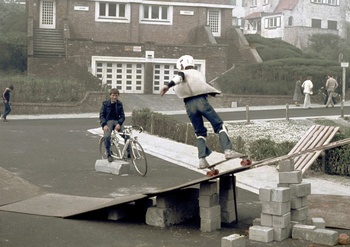
Skating in Belgium in the Seventies: a pile of bricks and a couple of construction planks do the trick
“We would find ways to get our hands on magazines like Skateboard Magazine, sometimes six months after they had come out,” Mitevoy tells us. “There was no internet so that’s all we had.” But it worked, and the Californian dream slowly got percolated into Belgian car parks and residential neighbourhoods. “My father even built a ramp in my bedroom,” Mitevoy laughs. “A little while later, he opened the very first indoor skate park in Belgium, Skate One in Etterbeek.” Mostly they just had to make do with what they could find, like construction planks and a pile of stones. “In the very beginning we would support the planks with our bodies. [Laughs] We were constantly looking for cool places in Brussels. Like the Meli park on the Heizel/Heysel, that had those mini pools.” Mitevoy and his little “gang” were on their boards all the time. Often at night too because then the streets belonged to them and not to the cars. “Our parents often didn’t know where we were hanging out until the police came looking for us. [Laughs] I guess we were very precocious teenagers, out looking for kicks.”
ROLLS-ROYCE
Around 1978, the first skate wave in Belgium reached its peak. Mitevoy’s dad would drive their old English taxi across the whole country to take part in competitions. “There were various teams, including the Brussels Double Deck, which had manufactured the first Belgian skateboard,” Mitevoy recalls. “To us, that was the Rolls-Royce of skateboards. We did very different things with them than people do now, like slaloming between cones, high jumping… We also did freestyle, which was almost like a choreography. People would look at us as though we were animals in a zoo. Later, we toured all around Europe to compete. We were every bit as good as the French and German teams.”
Just as quickly as the skate wave had flooded in, it rolled out again. “I was Belgian champion a few times, but I stopped skating in the late 1970s,” Mitevoy says. “I developed different interests, like motorbikes and girls… [Laughs] But once a skater, always a skater.” “Skating became popular again in the mid-1980s,” Laguna says. “But by then, people realized that you could make money out of it. The naïve, innocent character of the early years was gone; skate culture matured.” That is precisely what makes Laguna’s find so valuable: for the first time, his book sheds light on the first wave of European skaters. “I hope the photographer will now identify him- or herself. Who took these photos and how did they end up at the flea market?”
Read more about: Expo
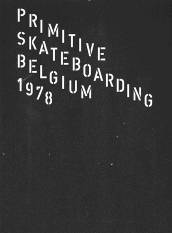
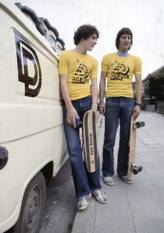
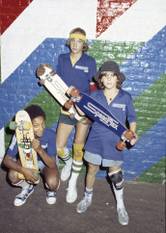
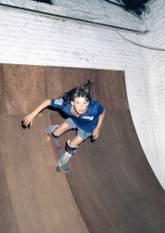
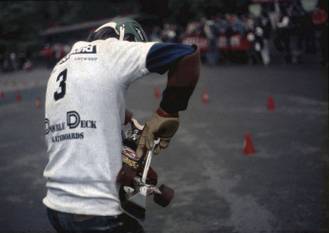
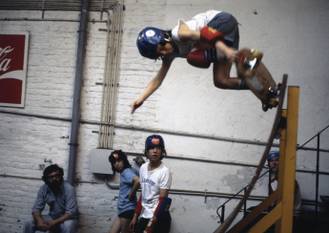
Fijn dat je wil reageren. Wie reageert, gaat akkoord met onze huisregels. Hoe reageren via Disqus? Een woordje uitleg.